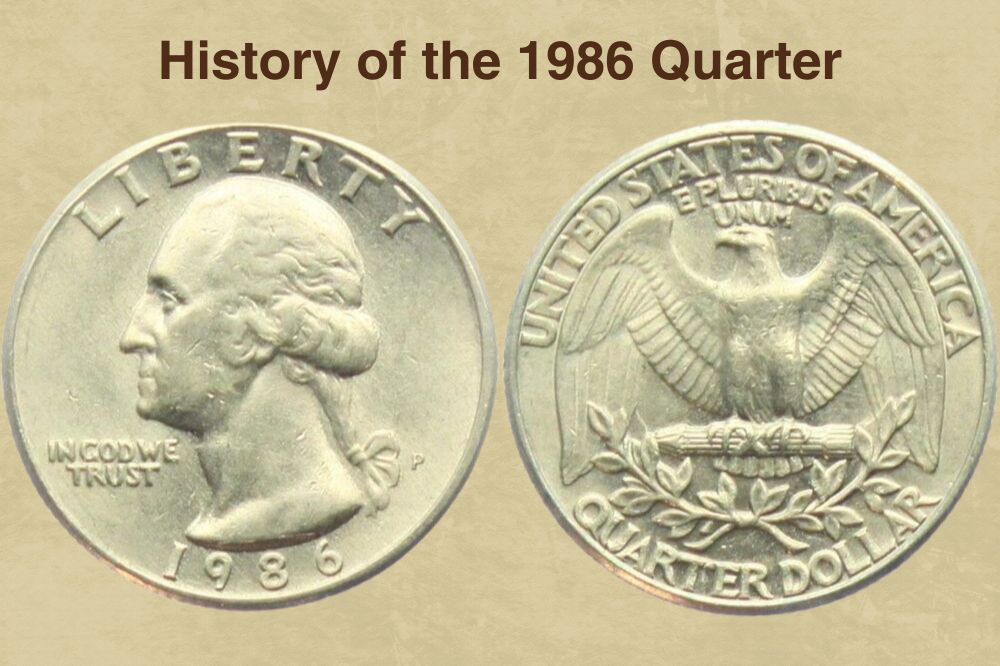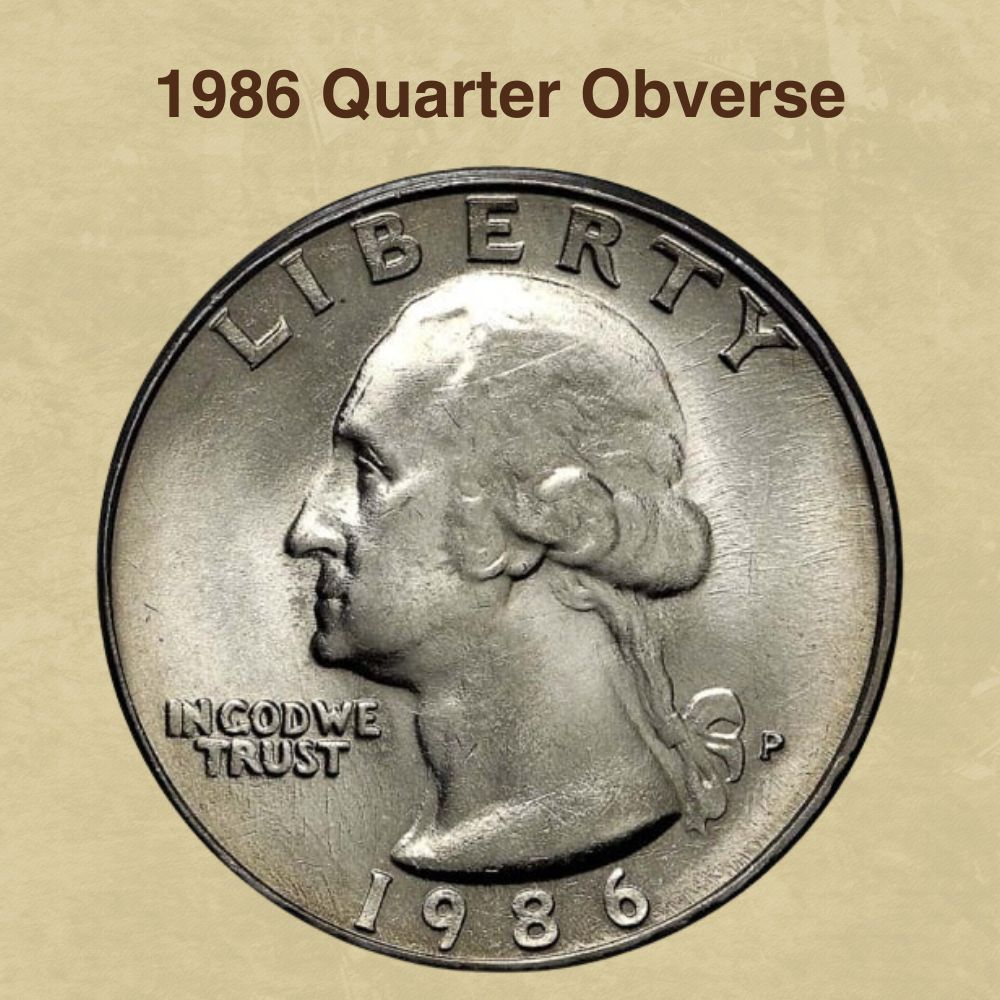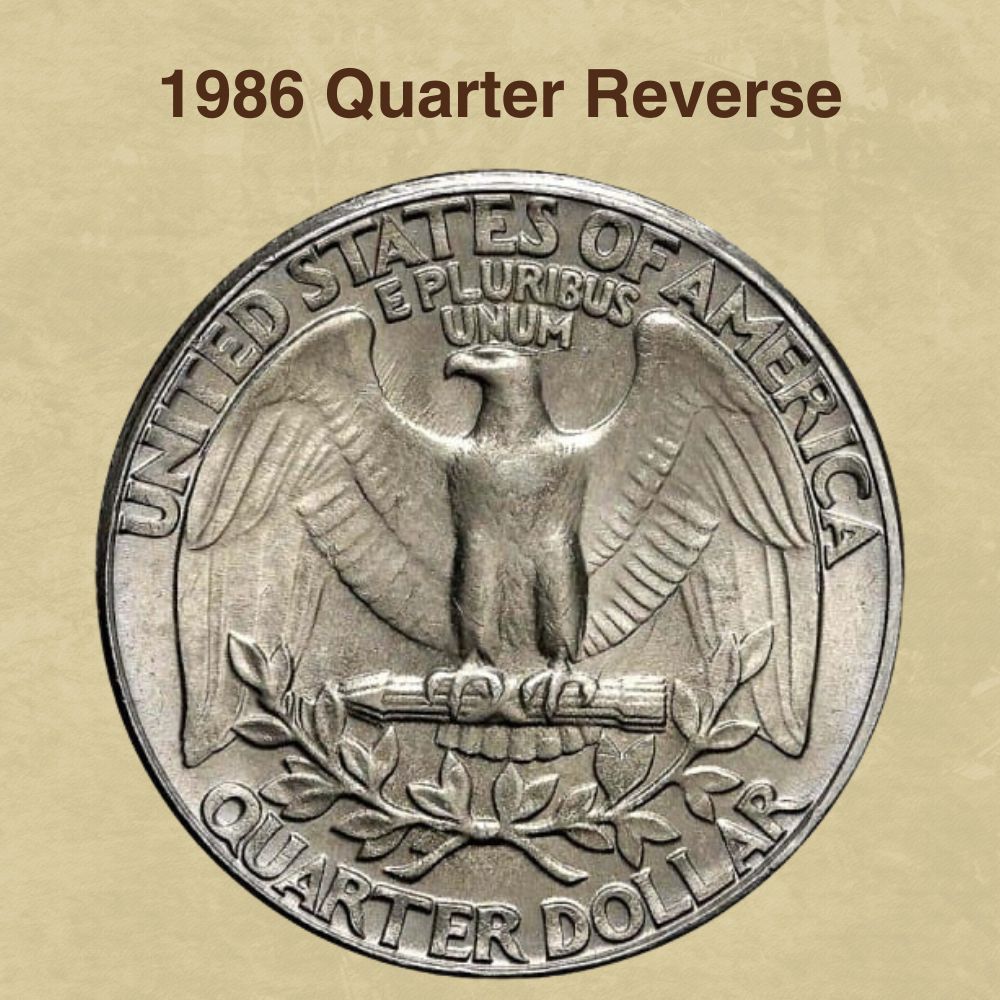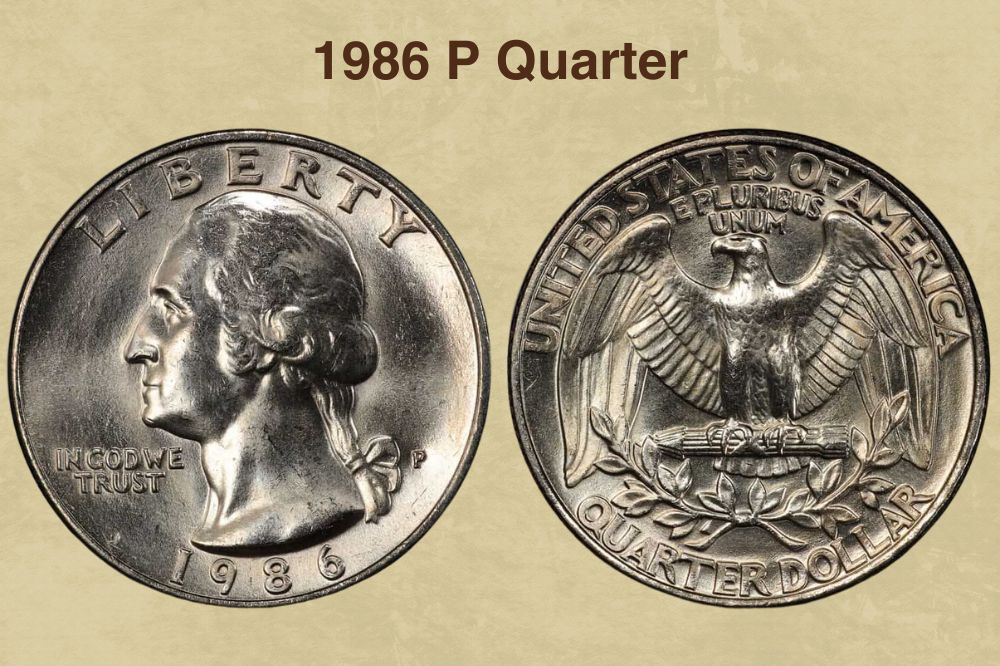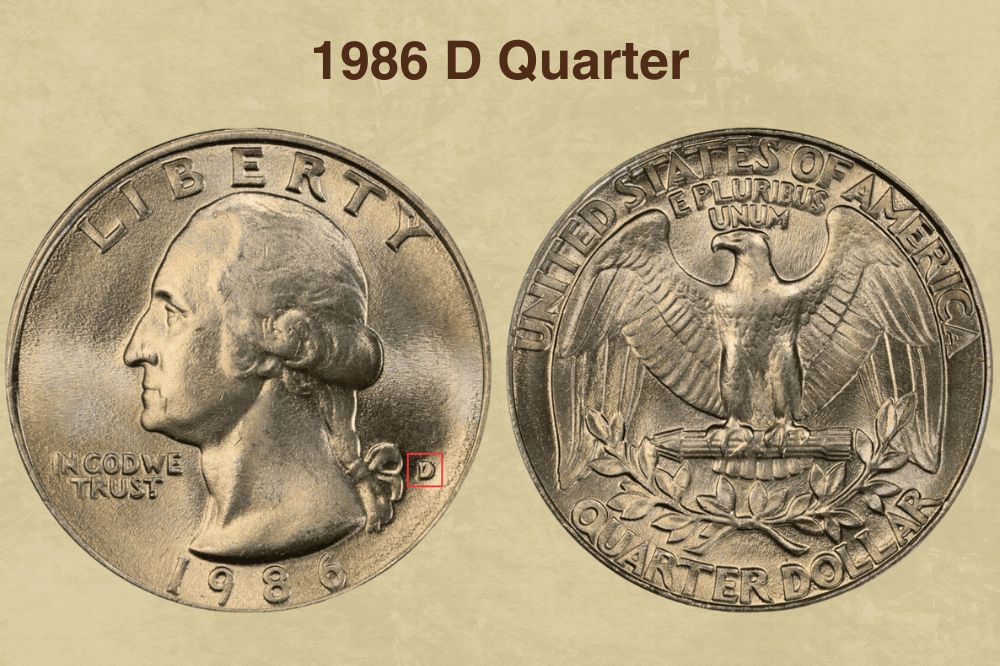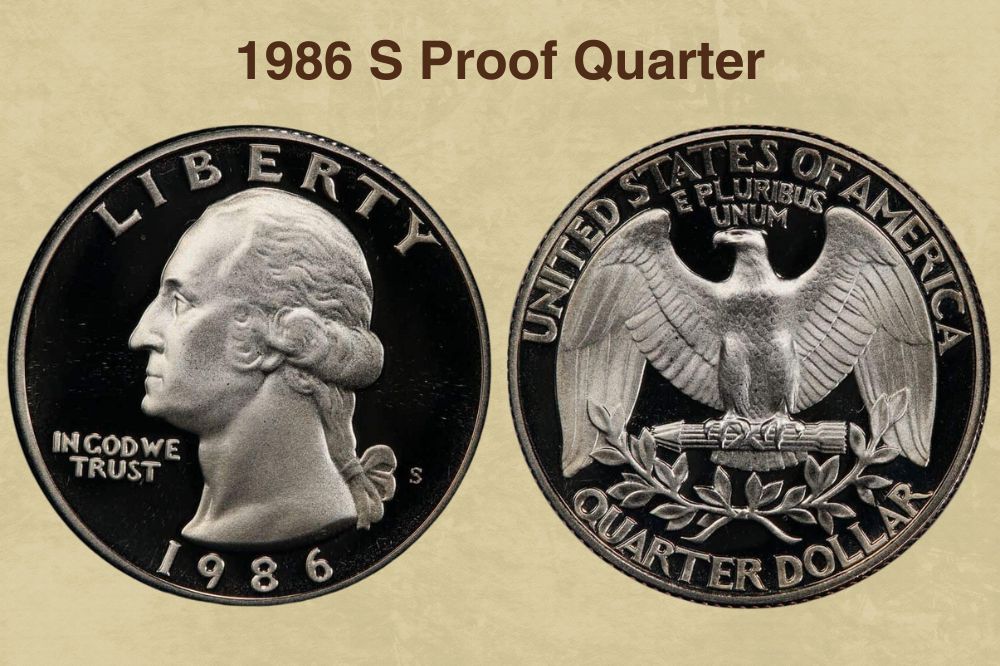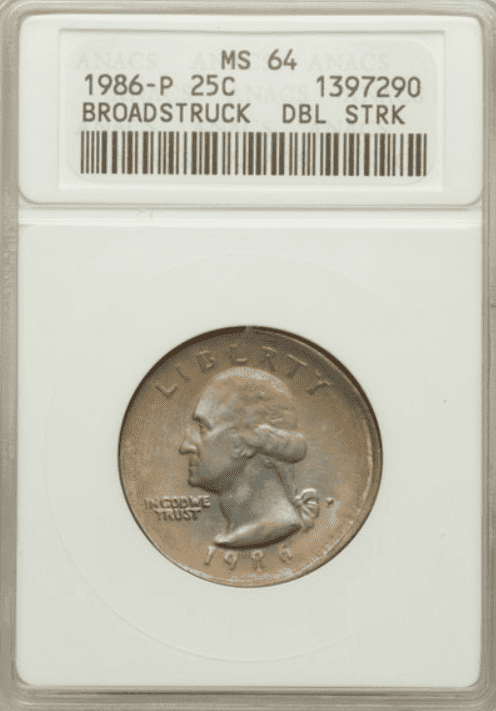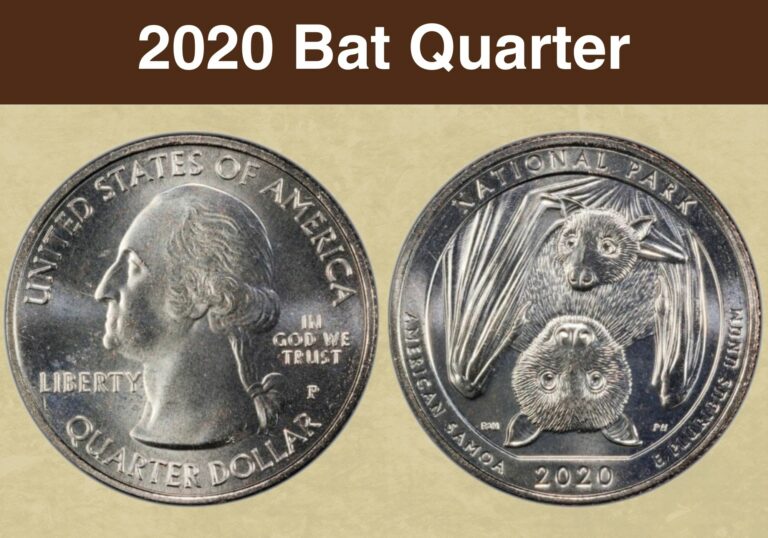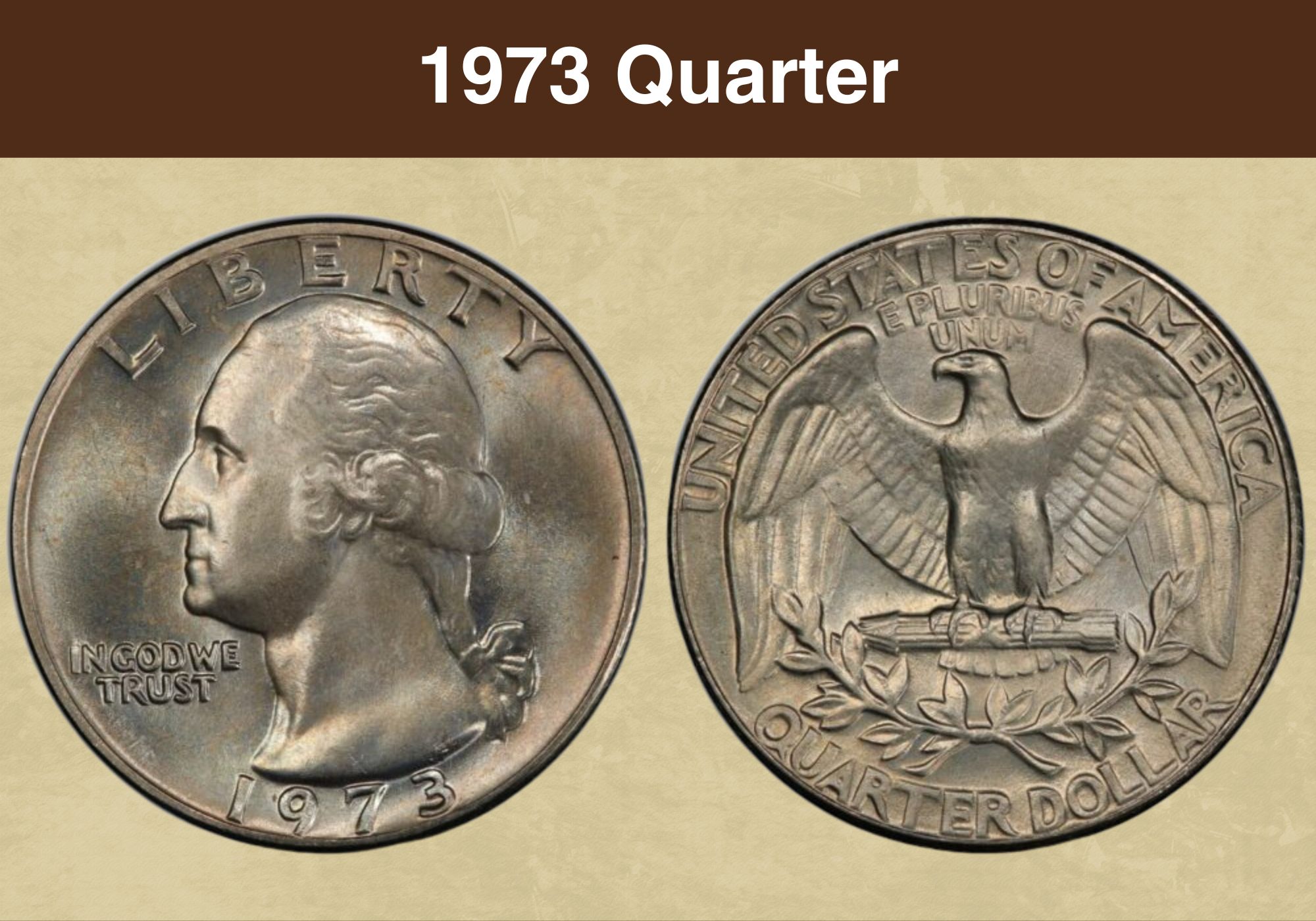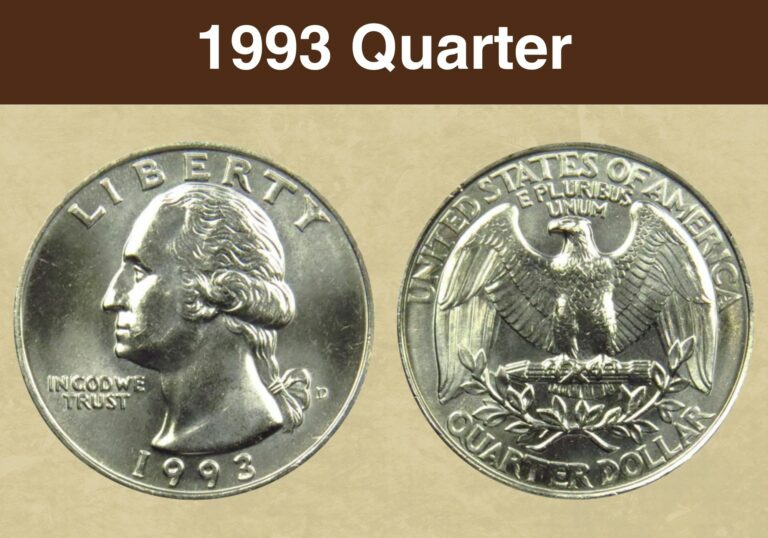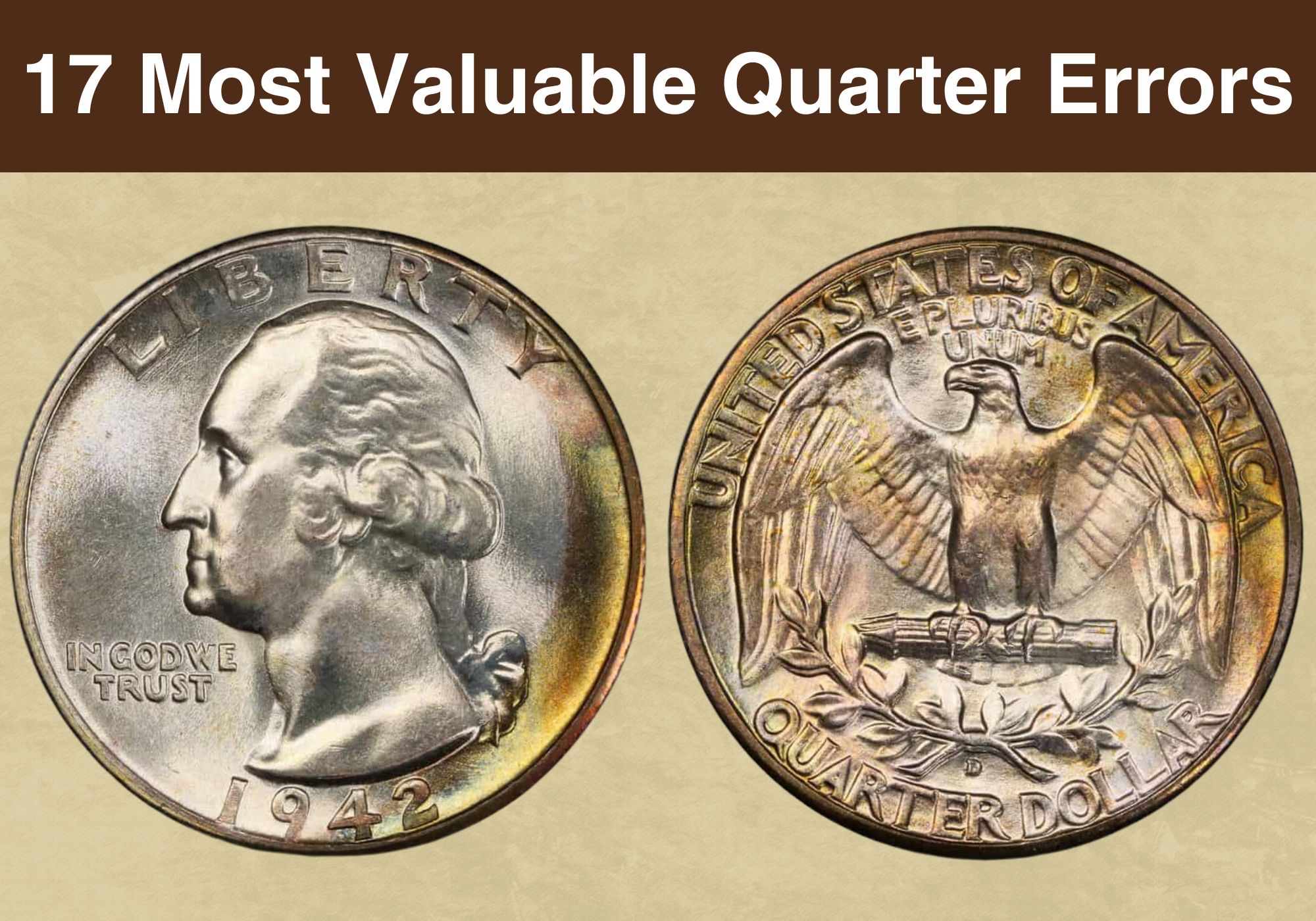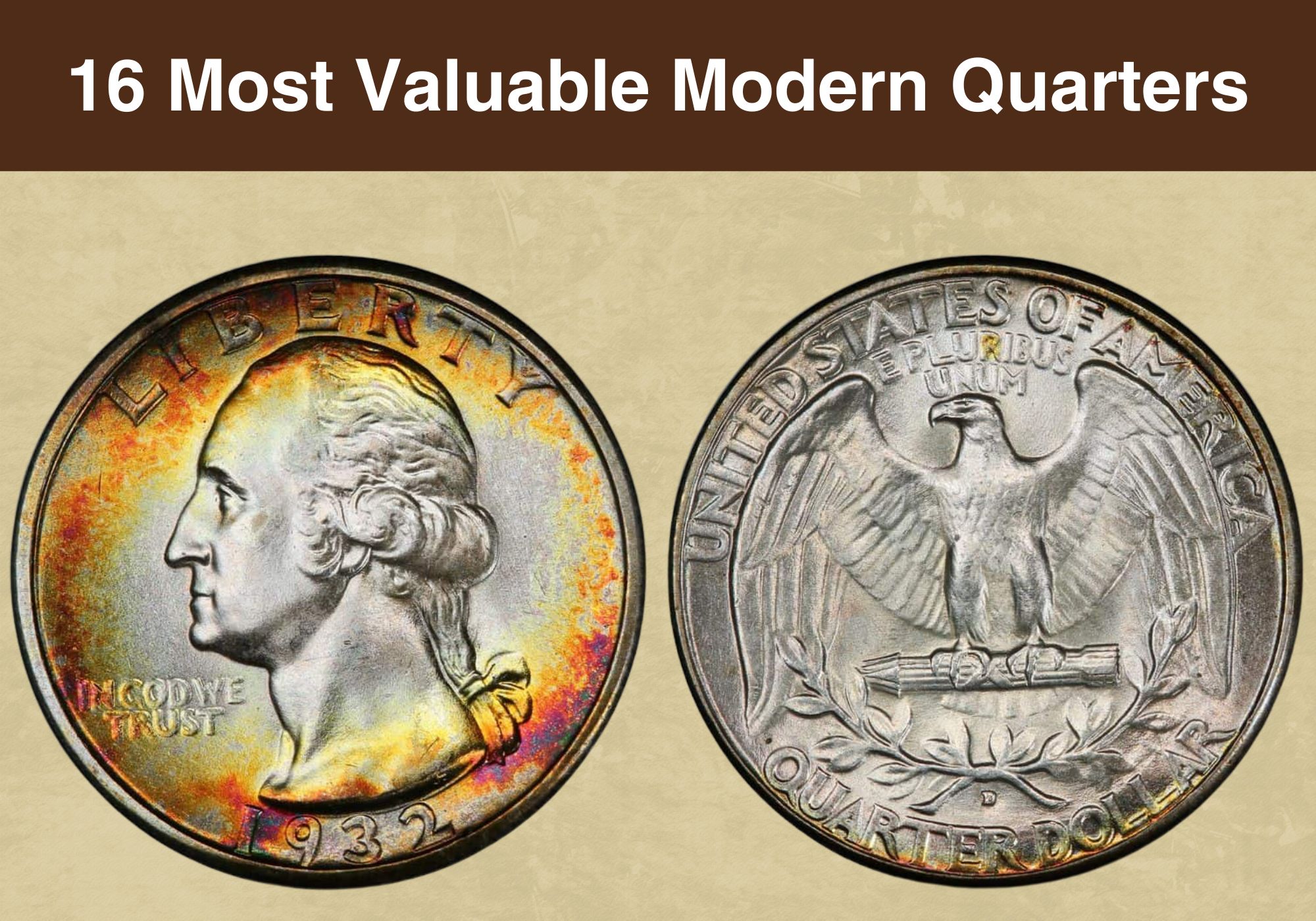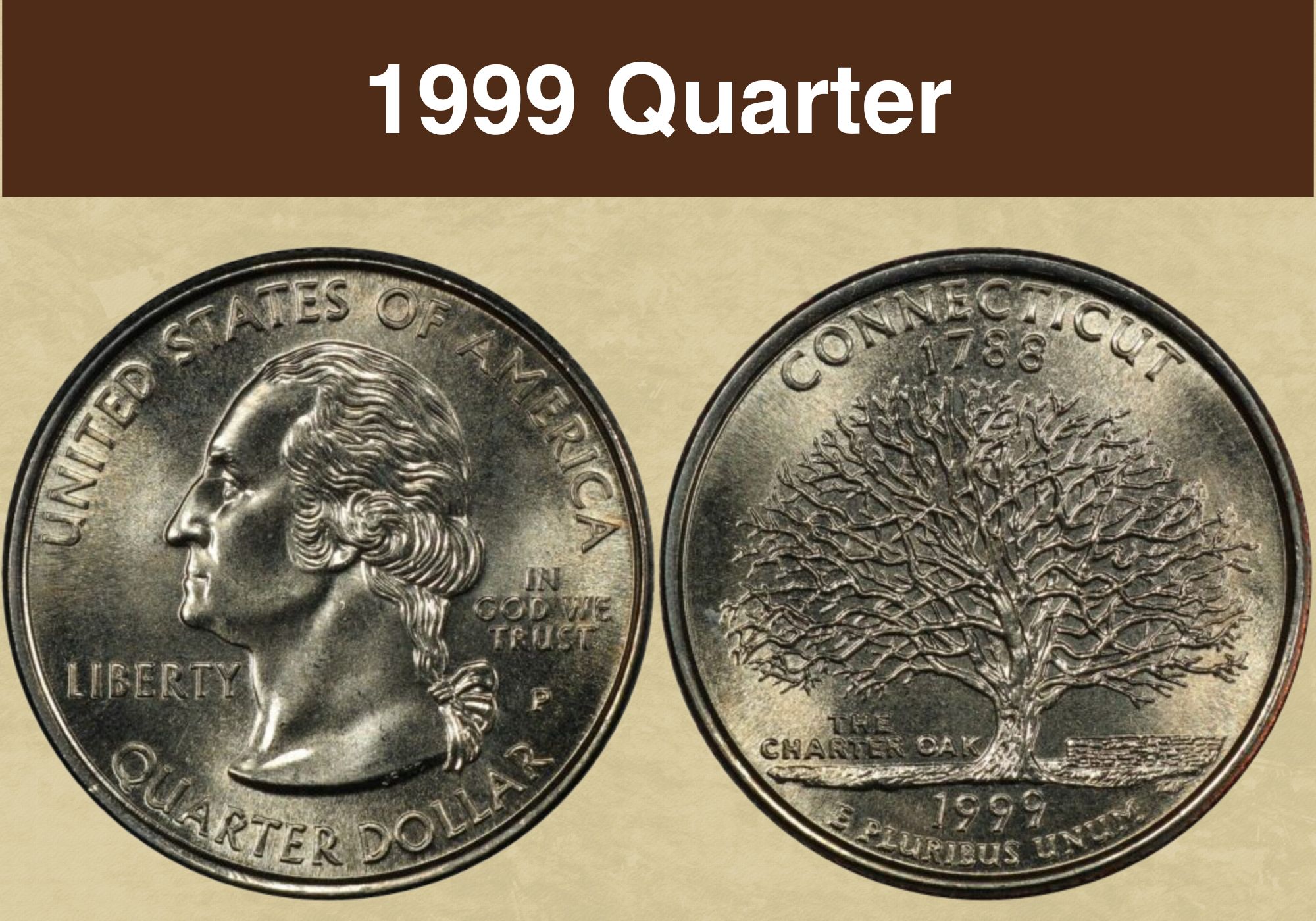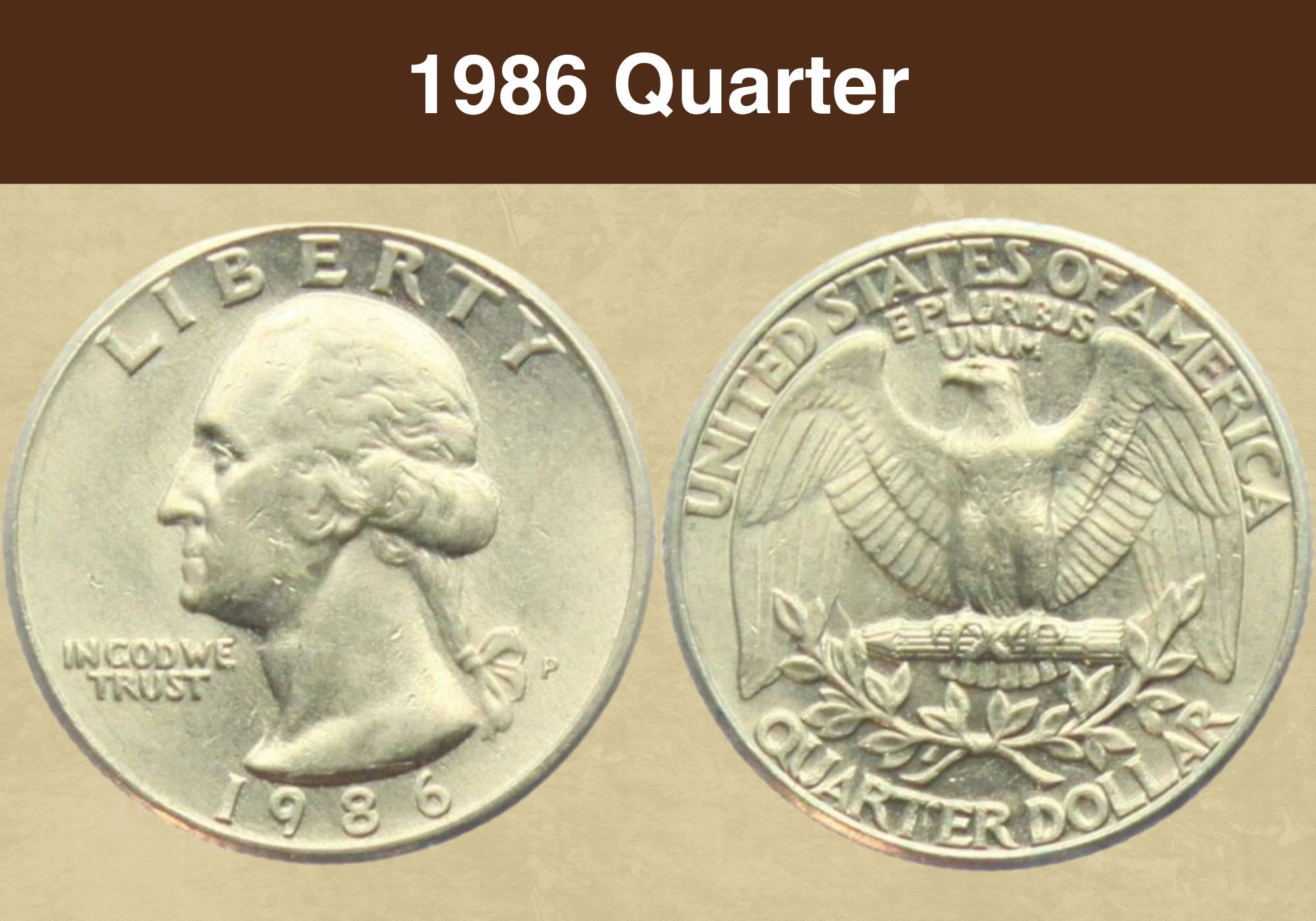
Coin Value Contents Table
If you’ve found a quarter dated 1986 in your pocket change, you might be asking yourself some questions. Who designed it? How rare is it? And most importantly of all, what’s it worth?!
That’s what we’re here to find out! We’re going to explore the 1986 quarter value, and find out what factors affect it. We’ll dig into its history and design. And we’ll discover some of the interesting error coins that escaped the Mint’s quality control processes.
Ready to learn more? Then let’s get started!
1986 Quarter Value Chart |
||||
| Mint mark | XF45 | MS60 | MS65 | MS67 |
| 1986 P Quarter Value | $0.25 | $1 | $20 | $2000 |
| 1986 D Quarter Value | $0.25 | $1 | $12 | $500 |
| PR61 | PR67 | PR69 | PR70 | |
| 1986 S Proof DCAM Quarter Value | $5 | $6 | $16 | $34 |
History of the 1986 Quarter
The 1986 quarter is one of a series known as “Washington quarters”. They get their name from the portrait on the obverse, or “heads” side of the coin. That depicts the first president of the USA, George Washington.
The first Washington quarters were struck in 1932, and in those days, they were made of 90 per cent silver. But over the years, the rising price of silver bullion meant that it became ever more expensive to produce the coins.
And that wasn’t the only problem. Hoping that the silver content would soon be worth more than the coins’ face value, members of the public began to hoard them.
Making expensive coins that were never used wasn’t the Treasury’s idea of sound economy. So in 1965, they took action. They continued to strike quarters dated the previous year, hoping this would discourage the hoarding.
But the plan didn’t work, and a few months later the Treasury decided to remove the silver from the quarters instead. From then on, the coins would be made of copper, clad in cupronickel to retain the silver color.
The new planchets were harder than their silver predecessors, which posed some challenges for production. To deal with this, the Mint lowered the relief of the design, allowing a good strike to be achieved.
In 1986, business strike Washington quarters were produced at Mint facilities in two locations – Philadelphia and Denver. In earlier years, Philadelphia didn’t use a mint mark, but that had all changed by 1986.
Coins marked with a “P” were struck in Philadelphia, while those with a “D” hailed from Denver.
And there are also proof quarters marked with a “S” for San Franciso.
Also read: Top 13 Most Valuable State Quarters Worth Money
Features of the 1986 Quarter
The Obverse of the 1986 Quarter
The Washington quarter had the same portrait on its obverse for 90 years. It depicted George Washington, and it was the work of an artist named John Flanagan. But its choice was the subject of some controversy – both at the time and through the years since.
It had originally been planned to honor Washington with a half-dollar coin. That would be produced for just one year – the bicentenary of Washington’s birth.
A committee had been set up to manage all the arrangements for the bicentenary. And that committee had selected a portrait for the coin – an image by an American artist named Laura Gardin Fraser.
But the plans changed, and it was decided the Washington coin should be a quarter instead. But more importantly, it should be a permanent addition to the nation’s coinage. As such, the decision on its design passed from the Bicentenary Committee to the Treasury.
The committee wrote to the Treasury Secretary, Andrew Mellon, recommending Fraser’s portrait for the obverse of the quarter. But Mellon preferred Flanagan’s image.
Mellon had stepped down from the role before the coin was issued, and the committee attempted to reopen the matter with his successor, Ogden Mills. But Mills refused to revisit the decision, and it was Flanagan’s portrait that won the day.
After almost a century, however, Fraser’s work is now enjoying its moment in the sun. It was chosen for the obverse of the “American Women” series of quarters, first issued in 2022.
The obverse of the 1986 quarter features the word “LIBERTY” above Washington’s portrait. The letters are inscribed on a curve to follow the upper coin edge. The date mirrors it at the bottom, while the motto “IN GOD WE TRUST” is to the left of the portrait.
The mint mark is inscribed to the right of Washington, near the ribbon which secures his braid.
The Reverse of the 1986 Quarter
The reverse of the Washington quarter changed several times through the years. But in 1986, the design was the same as for the first coins in the series. And like the obverse, it was the creation of John Flanagan.
It shows a stylized eagle in a heraldic pose. Its outstretched wings stretch to almost either side of the coin. It is perched on a fletch of arrows, and an olive branch sits below it.
The denomination, inscribed as “QUARTER DOLLAR”, appears at the bottom of the coin. The country name is at the top, and below it is the Latin phrase “E PLURIBUS UNUM”. The words mean “Out of the many, one”, and refer to the country’s birth as a union of states.
Other Features of the 1986 Quarter
The 1986 quarter, like all clad quarters, measures 24.3 millimeters in diameter and weighs 5.67 grams. While the dimensions are the same as for the earlier silver quarter, the weight is slightly lighter. The silver coins weighed in at 6.25 grams.
Turn the quarter on its side, and you’ll see a series of parallel grooves running parallel to the coin faces. These are known as “reeds”. They’re made by the collar which holds the planchet in place as it’s struck by the die.
But they’re not just decorative. Reeded edges were first introduced in the eighteenth century, in the days when coins were usually made out of precious metal.
Unscrupulous traders would sometimes slice slivers of metal from the edges, devaluing the coins. The patterned edge would allow anyone receiving the coin to see at once that it had been tampered with.
All quarters from 1986 will have either a Denver, Philadelphia or San Francisco mint mark. From 1977 to 1979, quarters were struck at the Mint facility at West Point too, but they weren’t marked.
This YouTube video from BigDCoins shows 1986 quarters with all three mint marks.
1986 Quarter Grading Guides
| # | Grade |
|---|---|
| 1 | Basal State-1 |
| 2 | Fair |
| 3 | Very Fair |
| 4, 5, 6 | Good |
| 7, 8, 10 | Very Good |
| 12, 15 | Fine |
| 20, 30 | Very Fine |
| 40 | Extremely Fine |
| 50 | About Uncirculated |
| 60 | Mint State |
| 65 | Mint State |
| 70 | Mint State |
Please check our grading guides to know your coin scale, It’s the necessary step to know the exact value of your coin.
Check out now: How to Grade Washington Quarter?
1986 Quarter Value Guides
1986 P Quarter Value
1986 saw over 551 million quarters struck at the Philadelphia Mint facility. And as a relatively recent mintage, many of those still survive. The independent coin grading agency, the PCGS, estimates that around 193 million exist today.
But not all of those coins are of equal value. Generally speaking, the better the condition, the rarer and more valuable a coin will be.
Coin condition is graded on a scale from 1 to 70. 1 signifies a coin that’s in very poor condition, with just enough detail remaining to allow the denomination and mintage to be identified. A coin graded 70, on the other hand, is flawless.
Coins that have never been circulated are known as “mint state”, and graded MS60 and above. And coins graded MS65 and higher are known as “gems”.
A 1986 P quarter in circulated condition won’t usually be worth more than its face value. (The exception to that rule would be a coin with an interesting Mint error.)
In mint state, values start at around a dollar for a coin graded MS60 and rise gradually from there. A gem MS65 example could be yours for around $20, while at MS66, the value is $85.
From there, prices rise steeply. At MS66+, you can expect to pay around $300. The PCGS has certified eleven coins at MS67, and values those at an impressive $2,000 apiece.
And the top grade for this mintage is MS67+. A coin at that level is worth around $3,000.
1986 D Quarter Value
The Denver Mint facility produced slightly fewer quarters than Philadelphia in 1986. But with over 504 million coins rolling out of the coin presses there, they’re not rare. The PCGS estimates the number of survivors at all grades to be around 177 million.
And mint condition quarters survive in good numbers too. There are thought to be well over 53 million of them, while around a tenth of that number are gem quality.
As with Philadelphia quarters, a standard circulated coin will only be worth its 25 cents face value.
In the lower mint state grades, values hover around a dollar. And a gem quality MS65 coin can be purchased for around $12.
Values leap from $38 at MS66 to $80 at MS66+, and $500 at MS67. And the finest example to have so far come to light is a single coin graded MS67+. The PCGS values that one at a cool $3,750.
1986 S Proof Quarter Value
Proof quarters were produced using specially crafted dies and highly polished planchets. They were aimed at collectors.
In 1986, with coin collecting a popular habit, over 3 million proof quarters were produced at the San Francisco Mint facility. And because they were always marketed as collectors’ items, relatively few have been lost over the years.
That means they’re still easy to find – which keeps prices modest.
Proof coins are, by definition, uncirculated. The lowest quality examples are graded PR61 and are worth around $5. That value creeps up to a mere $6 at PR67 – meaning you can get your hands on a high quality coin for very little money.
A near-perfect PR69 1986 S quarter is worth around $16. And even a flawless PR70 example can be purchased for around $34.
Also read: Top 16 Most Valuable Modern Quarters Worth Money
Rare 1986 Quarter Errors List
1986 P Quarter, Broadstruck and Double Struck
A broadstruck coin is one that wasn’t properly held in place by the collar as it was struck. As a result, the metal was able to expand beyond its proper area.
That happened to one quarter struck in Philadelphia in 1986. What’s more, it wasn’t ejected from the press after being struck, and was struck a second time.
As with standard coins, the value of error coins depends partly on their condition. This particular example was graded MS64 by the coin grading agency ANACS. And when it was presented at auction, it sold for $120.
1986 D Quarter, Triple Curved Clips
Sometimes, the planchet is not properly clipped from the strip of metal. The coins struck on those defective planchets have curved sections missing from them. These are known as clip errors.
One quarter struck in Denver in 1986 had not one, but three, such errors.
The most dramatic meant that Washington’s mouth, chin and the tip of his nose were missing. The second clip removed the metal that should have been stamped with the first two digits of the date. And the third notched a small arc out of the coin edge near the letters “L”, “I”, and “B” of “LIBERTY”.
The coin was graded MS61 by the NGC and sold at auction for $140.
This YouTube video from Couch Collectibles shows both these error coins and more.
Also read: 17 Most Valuable Quarter Errors Worth Money
Where to Sell Your 1986 Quarter ?
Now that you know the value of your coins, do you know where to sell those coins online easily? Don’t worry, I’ve compiled a list of these sites, including their introduction, pros, and cons.
Check out now: Best Places To Sell Coins Online (Pros & Cons)
FAQs
How many 1986 quarters were made?
There are three different mintages of 1986 quarters.
The 1986 P, from Philadelphia, was produced in the largest quantities. 551,199,333 of those coins were struck.
The 1986 D quarter, struck in Denver, was almost as abundant. 504,298,660 of those were produced.
The 1986 S quarter was a proof coin, struck in more limited numbers. But even so, 3,010,497 of them were produced.
In total, well over a billion quarters were made in 1986.
What year of quarters are worth money?
Clad quarters – those with a copper core clad in cupronickel – were produced from 1965 onwards. They were minted in large numbers, and none of them are particularly rare today. Nevertheless, business strike coins in the very finest grades can be worth a couple of thousand dollars.
The coins issued from 1932 to 1964 are made mostly of silver. Whilst most mintages are easy to find in circulated condition, some are extremely rare in high mint state grades. Those can fetch five-figure or even six-figure prices.
A 1932 D quarter graded MS66, for example, sold at auction in 2008 for a record-breaking $143,750.

